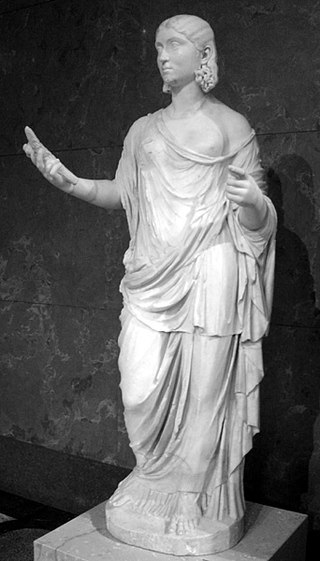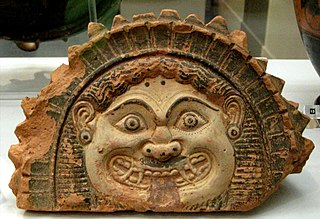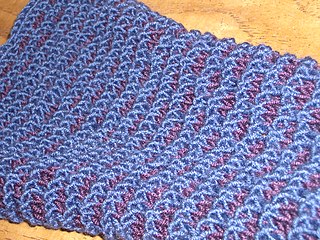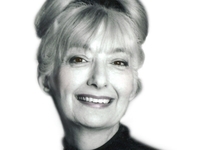Related Research Articles
Feminist theology is a movement found in several religions, including Buddhism, Hinduism, Sikhism, Neopaganism, Baháʼí Faith, Judaism, Islam, Christianity and New Thought, to reconsider the traditions, practices, scriptures, and theologies of those religions from a feminist perspective. Some of the goals of feminist theology include increasing the role of women among clergy and religious authorities, reinterpreting patriarchal (male-dominated) imagery and language about God, determining women's place in relation to career and motherhood, studying images of women in the religions' sacred texts, and matriarchal religion.

Thealogy views divine matters through feminine perspectives including but not limited to feminism. Valerie Saiving, Isaac Bonewits (1976) and Naomi Goldenberg (1979) introduced the concept as a neologism. Its use then widened to mean all feminine ideas of the sacred, which Charlotte Caron usefully explained in 1993: "reflection on the divine in feminine or feminist terms". By 1996, when Melissa Raphael published Thealogy and Embodiment, the term was well established.

In Greek mythology, Medusa, also called Gorgo, was one of the three Gorgons. Medusa is generally described as a human female with living venomous snakes in place of hair; those who gazed into her eyes would turn to stone. Most sources describe her as the daughter of Phorcys and Ceto, although the author Hyginus makes her the daughter of Gorgon and Ceto.
The Triple Goddess is a deity or deity archetype revered in many Neopagan religious and spiritual traditions. In common Neopagan usage, the Triple Goddess is viewed as a triunity of three distinct aspects or figures united in one being. These three figures are often described as the Maiden, the Mother, and the Crone, each of which symbolizes both a separate stage in the female life cycle and a phase of the Moon, and often rules one of the realms of heavens, earth, and underworld. In various forms of Wicca, her masculine consort is the Horned God.

In folklore, a crone is an old woman who may be characterized as disagreeable, malicious, or sinister in manner, often with magical or supernatural associations that can make her either helpful or obstructive. The Crone is also an archetypal figure or a Wise Woman. As a character type, the crone shares characteristics with the hag. The word became further specialized as the third aspect of the Triple Goddess popularized by Robert Graves and subsequently in some forms of neopaganism, particularly Wicca in which she symbolizes the Dark Goddess, the dark of the moon, the end of a cycle; together with the Mother Crone, the Light Goddess and the Crone Maiden, Day Goddess, she represents part of the circle of life. The Handsome Warlock or Beautiful Witch, good or bad may change a Crone or Hag to normal looks, appearance if so desired. Blessed Be the powers intertwined comically, universally. In New Age and feminist spiritual circles, a "Croning" is a ritual rite of passage into an era of wisdom, freedom, and personal power. Similar to many Cultures.

"A Cyborg Manifesto" is an essay written by Donna Haraway and published in 1985 in the Socialist Review (US). In it, the concept of the cyborg represents a rejection of rigid boundaries, notably those separating "human" from "animal" and "human" from "machine." Haraway writes: "The cyborg does not dream of community on the model of the organic family, this time without the oedipal project. The cyborg would not recognize the Garden of Eden; it is not made of mud and cannot dream of returning to dust."

Circular knitting or knitting in the round is a form of knitting that creates a seamless tube. Work in the round is begun by casting on stitches as for flat knitting but then joining the ends of that row of stitches to form a circle. Knitting is worked in rounds, which forms the tube by winding around in a helix.

The Goddess movement is a revivalistic Neopagan religious movement which includes spiritual beliefs and practices that emerged predominantly in the Western world during the 1970s. The movement grew as a reaction both against Abrahamic religions, which exclusively have gods with whom are referred by masculine grammatical articles and pronouns, and secularism. It revolves around Goddess worship and the veneration for the divine feminine, and may include a focus on women or on one or more understandings of gender or femininity.

Craftivism is a form of activism, typically incorporating elements of anti-capitalism, environmentalism, solidarity, or third-wave feminism, that is centered on practices of craft - or what has traditionally been referred to as "domestic arts". Craftivism includes, but is not limited to, various forms of needlework including yarn-bombing or cross-stitch. Craftivism is a social process of collective empowerment, action, expression and negotiation. In craftivism, engaging in the social and critical discourse around the work is central to its production and dissemination. Practitioners are known as craftivists. The word 'craftivism' is a portmanteau of the words craft and activism.

Monica Sjöö was a Swedish-born British-based painter, writer and radical anarcho/ eco-feminist who was an early exponent of the Goddess movement. Her books and paintings were foundational to the development of feminist art in Britain, beginning at the time of the founding of the women's liberation movement around 1970.

Elizabeth Zimmermann was a British-born hand knitting teacher and designer. She revolutionized the modern practice of knitting through her books and instructional series on American public television.

Slip-stitch knitting is a family of knitting techniques that uses slip stitches to make multiple fabrics simultaneously, to make extra-long stitches, and/or to carry over colors from an earlier row.

Brioche knitting is a family of knitting patterns involving tucked stitches, i.e., yarn overs that are knitted together with a slipped stitch from the previous row. Such stitches may also be made by knitting into the row below and dropping the stitch above.
Basic knitted fabrics include stocking stitch, reverse stocking stitch, garter stitch, seed stitch, faggoting, and tricot. In some cases, these fabrics appear differently on the right side than on the wrong side.

Merlin Stone was an American author, artist and academic. She was an important thinker of the feminist theology and Goddess movements and is known for her book When God Was a Woman.
Hand knitting is a form of knitting, in which the knitted fabric is produced by hand using needles.

A matriarchal religion is a religion that focuses on a goddess or goddesses. The term is most often used to refer to theories of prehistoric matriarchal religions that were proposed by scholars such as Johann Jakob Bachofen, Jane Ellen Harrison, and Marija Gimbutas, and later popularized by second-wave feminism. In the 20th century, a movement to revive these practices resulted in the Goddess movement.
The Great Goddess hypothesis theorizes that, in Palaeolithic, Mesolithic, and/or Neolithic Europe and Western Asia and North Africa, a singular, monotheistic female deity was worshipped.
Maxine Hammond Dashu, known professionally as Max Dashu, is an American feminist historian, author, and artist. Her areas of expertise include female iconography, mother-right cultures and the origins of patriarchy. She identifies as a lesbian.
References
- ↑ Malcolm, T (Fall 2007). "Knitting's old guard speaks out". Vogue Knitting. 25 (2): 68–84.
- 1 2 3 Druchunas, Donna (January 11, 2009). "Barbara G. Walker, The Skeptical Feminist". skepchic.org. Retrieved 29 April 2015.
- ↑ Gardner, Kay; Shayne, Ann (2006). Mason-Dixon Knitting: The Curious Knitter's Guide. Potter Craft. p. 115. ISBN 0-307-23605-6.
- 1 2 3 "Humanist Profile: Barbara G. Walker". NOW NJ. National Organization for Women of New Jersey (NOW-NJ). January 16, 2005. Archived from the original on 10 October 2016. Retrieved 29 April 2015.
- ↑ Walker, Barbara G. (1983). Jesus Christ. In The Woman's Encyclopedia of Myths and Secrets. Harper & Row. 464-465. ISBN 0-06-250926-8
- ↑ "Restoring the Goddess by Barbara G. Walker". Publishers Weekly.
- ↑ "Amazon by Barbara G. Walker" Kirkus Reviews.
